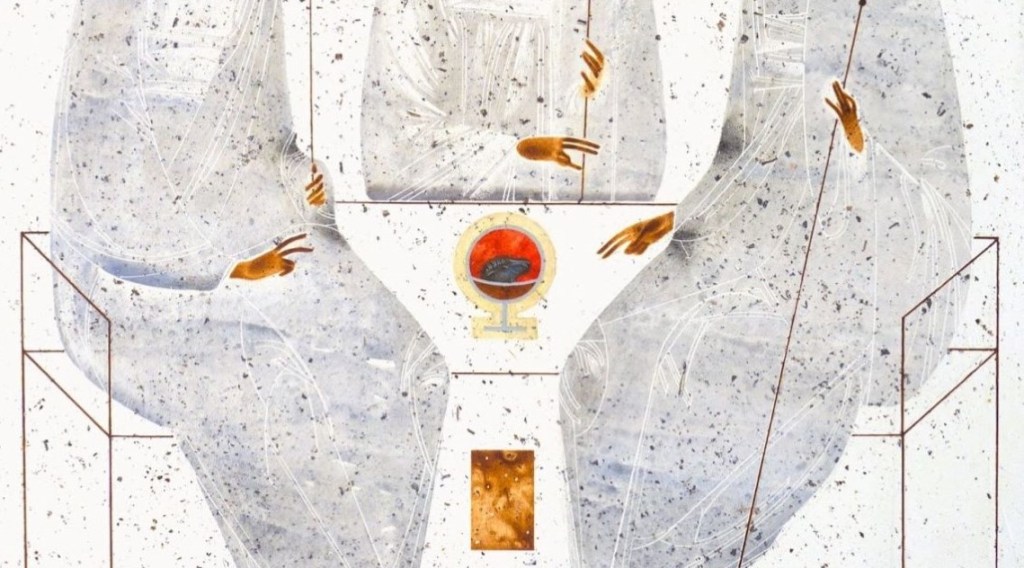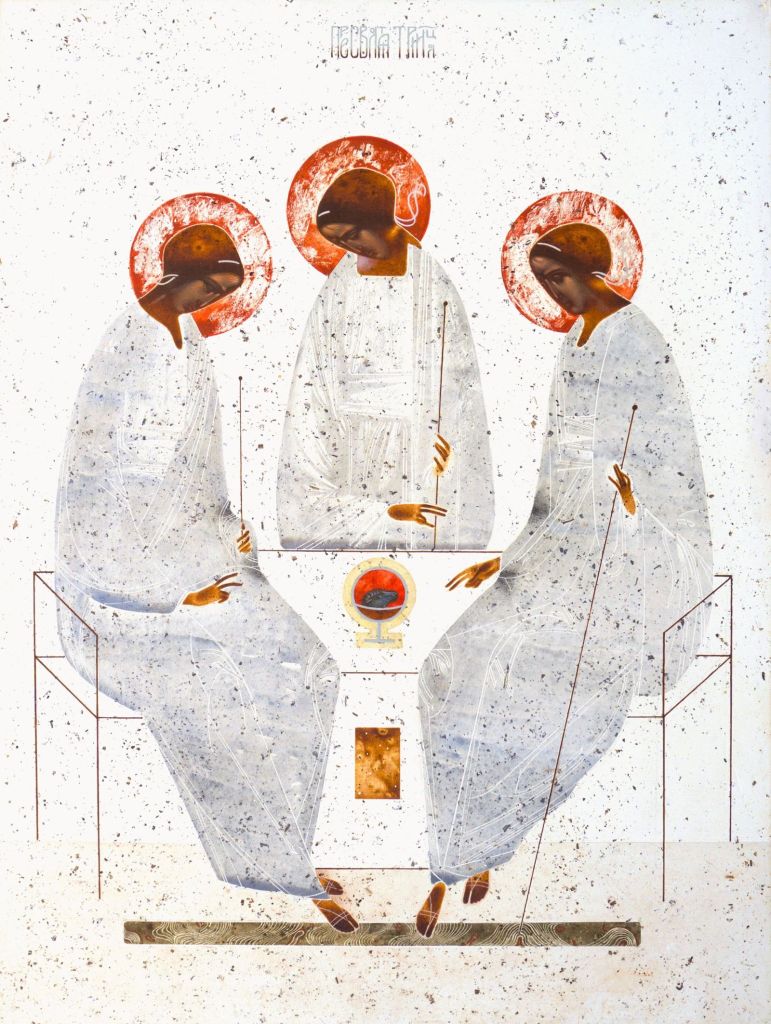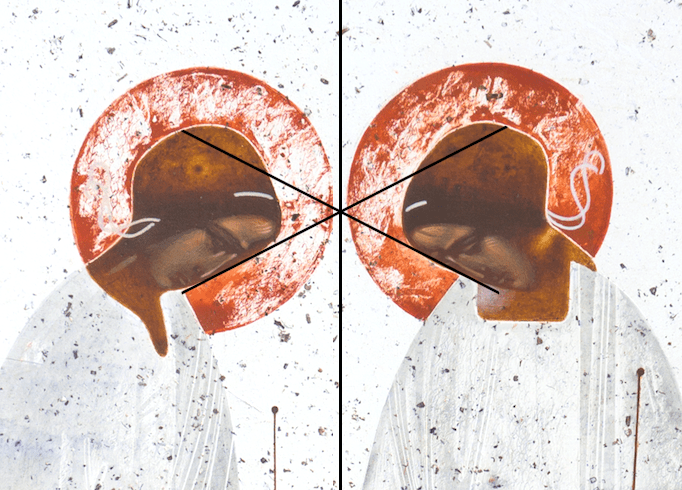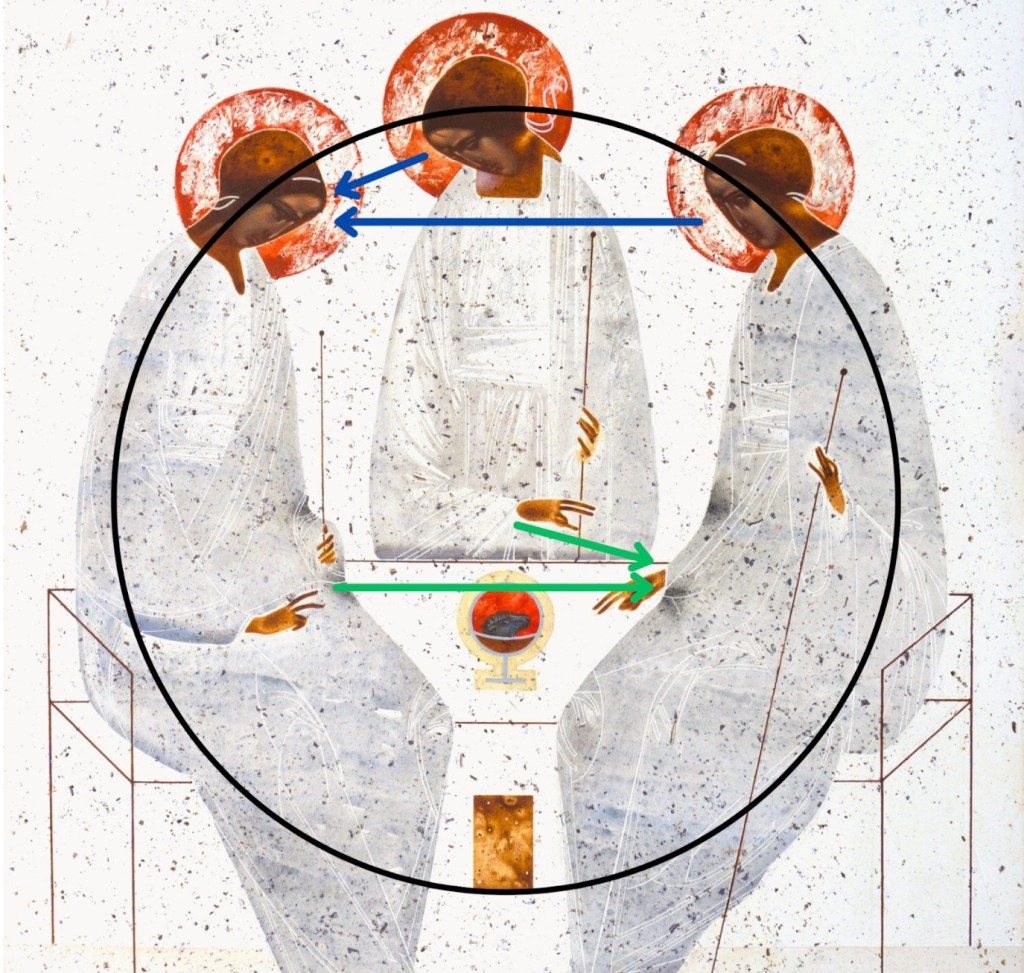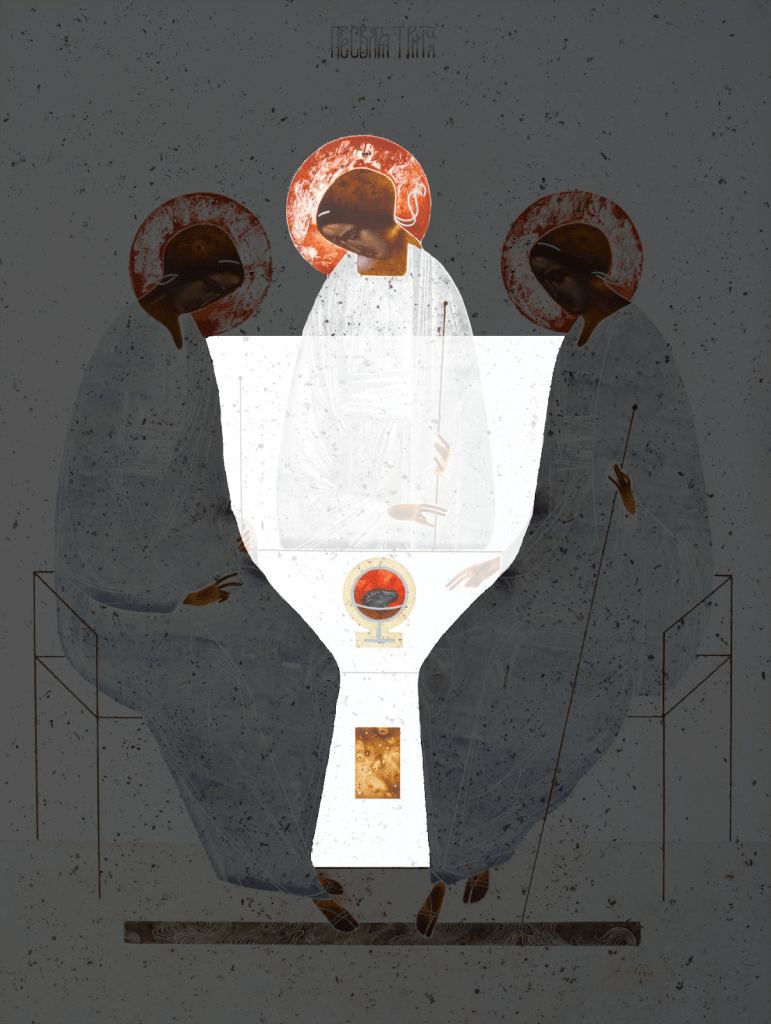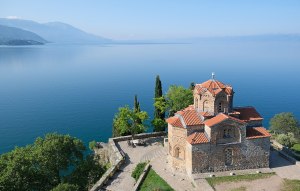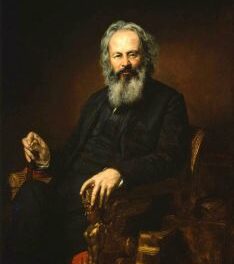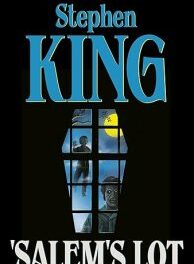We support our Publishers and Content Creators. You can view this story on their website by CLICKING HERE.
Take a good look at the icon below. What do you see?
Icons can be strange to our modern tastes. They are beautiful yet arrestingly otherworldly, with disorienting proportions and perspectives. Icons do not conform themselves to our own standards of judgment. To enter into the divine mysteries, we must relinquish our claim to be the ultimate judge of what is and what ought to be. Even before analyzing an icon, we must ask God to light the way of understanding. Now we can begin to see.
Ivanka Demchuk (website, Etsy shop) is a Ukrainian Catholic artist using new techniques to create modern masterpieces of iconography. In the icon above, Demchuk has daringly reinvisioned one of the most famous icons: The Trinity (15th c.) by Andrei Rublev. With some significant departures from the original, her icon The Holy Trinity (2016) probes the depths of the central mysteries of our Faith. For those who have eyes to see, this icon can be our guide into the contemplation of God’s own inner life and his love for us. While we cannot exhaust these riches in a single blog post, I would like to contemplate a few with you.
The entire icon is bathed in a brilliant white light. The bodies of the three figures themselves seem but mere shimmers of the background. White is the unity of all colors, which points us to the perfect unity of God. Indeed, we profess one God in Trinity, and Trinity in unity. The three Persons of the Trinity are the same Divine Essence. Each Person does not have a one-third share of the Divine Essence, but rather each Person is the one perfect unity of the Divine Essence.
Amid the white background, we have an explosion of red halos. Red is the color of blood and life (Lev 17:11). Hence, red is the color of love and power. The red halos remind us that our God is love (1 John 4:16) and absolute omnipotence (Rev 1:8). Our God is the living God (Ps 42:3). Our God is “a consuming fire” (Heb 12:29). As beloved children of God, we can be confident in His active care for us (Rom 8:28, 38-39), and so it is in God’s omnipotence and love that we find rest for our souls.
If each of the figures has the same colored clothing and the same halo and the same staff and even the same face, how can we tell them apart? A unique aspect of Demchuk’s icon is that the only difference between the figures is their relation to each other. And yet, this precisely points us to a Trinitarian mystery: the three Divine Persons are only distinct by relation. Rather than getting into the technical weeds of theology here, I recommend sitting down with the Catechism of the Catholic Church and praying with paragraphs 253-256 while meditating on the Trinity icon. Who knows, there might be a spark of Divine Light awaiting.
But the icon still has more to say about the inner life of God! The relations between the figures are distinguished by their faces and their hands. The middle figure and the right figure are humbly looking to the left figure as their ultimate and eternal principle of origin: God the Father. Even more subtly, if we vertically align the left figure (God the Father) and the middle figure, we see that their faces are nearly mirror images (see FIG. 2). The middle figure is God the Son, who is the perfect image of the Father (Col 1:15; John 14:9). The figure on the right has his face tilted up, as if gazing upon the relation between the Father and the Son. This is God the Holy Spirit. So from left to right, the three figures in the icon are God the Father, God the Son, and God the Holy Spirit, whose very being is love and happiness, consubstantial and co-eternal.
The hands signify the flow of life within the Trinity. The Father’s hand is raised in a gesture of blessing toward the Holy Spirit. The Son’s hand is also pointing toward the Holy Spirit. This all symbolizes that together the Father and the Son breathe forth the Holy Spirit (see the green lines in FIG. 3). All these dynamics of life and love are contained in a circle (outlined in black in FIG. 3), which provides structure to the piece. A circle symbolizes the infinity and timeless eternity of God. These elements work together in the icon to communicate a transcendent love, a graceful majesty, and a sacred silence charged with energy.
The Good News is that God has adopted us by grace and invites us to participate in his own Trinitarian life! And the icon reveals how…
A careful eye will notice that the outline of the Father and the Holy Spirit forms the shape of a chalice (highlighted in FIG. 4) containing three things: a bowl with a calf’s head (see Gen 18:1-8), a golden door, and the Son. The chalice calls to mind the Passion of our Lord Jesus Christ. From this perspective, the calf’s head on the table resembles a sacrifice on an altar, which finds its perfect fulfillment in the Cross. The gold door is a reference to the small opening in Catholic altars, which houses the relic of a saint. This gold door in the icon, which is vertically aligned with Christ and the calf, reminds us that we are united to Christ in baptism and our own lives share in the sacrifice of Christ and his supreme love.
In the Eucharist, Christ gives us himself and pours his own life into our souls. We are invited to join the Mystical Banquet of the Trinity through the sacrifice of our Lord Jesus Christ. And we join by picking up our cross and placing ourselves on the altar of charity, by acts of selfless love for God and our neighbor. At the Mass, we take our seat at the open place in the Trinity icon, a foretaste of heaven. In the end, knowing and loving God is not just an aspect of what heaven is, it is the entirety of what heaven is. In a single glance at this icon, you see the deepest mysteries of our faith. Much has been said, but we have only just scratched the surface. Look at the icon again. What do you see?
✠
Image: Ivanka Demchuk, The Holy Trinity, 2016 (used with permission)
Republished with gracious permission from Dominicana (November 2024).
The Imaginative Conservative applies the principle of appreciation to the discussion of culture and politics—we approach dialogue with magnanimity rather than with mere civility. Will you help us remain a refreshing oasis in the increasingly contentious arena of modern discourse? Please consider donating now.
Share This Story, Choose Your Platform!
Go to Top

 Conservative
Conservative  Search
Search Trending
Trending Current News
Current News 